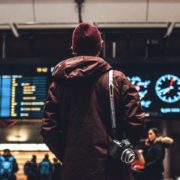The European Union Aviation Safety Agency (EASA) and European Centre for Disease Prevention and Control (ECDC) issued a joint document defining measures to assure the health safety of air travelers and aviation personnel once airlines resume regular flights.
The guidance examines each phase of the passenger journey and specifies the actions that need to be taken or measures put in place in six travel segments: before arrival at the airport, in the departure terminal, when boarding, in-flight, in transit and on arrival at the final destination. A separate section focusses on the safety of flight crew members.
Passengers are recommended to practice distancing, hand hygiene, respiratory etiquette, and use medical face masks, and to declare their COVID-19-related status before receiving their boarding pass. Passengers will also be asked to provide contact information to allow for “track and trace” if someone on a particular flight later tests positive for COVID-19.
Arrival and check-in
- Those not traveling will need to say goodbye to the passenger before they enter the terminal building, except in defined special cases.
- Those traveling are expected to take precautions such as washing hands and wearing masks, with exceptions for children under six and people with a medical reason not to.
- Airport operators should set up interview booths for people found to have a temperature of more than 38C to assess possible illness.
- Protective perspex barriers are also likely to become a feature of check-in desks and security areas
- All staff will be wearing masks but security employees performing body checks may also be wearing face shields.
- Security screening trays will be much more frequently disinfected.
Boarding and disembarking
- EASA recommends cutting down on cabin bags to speed up boarding and reduce contamination risk
- Passengers should be spaced apart if possible while boarding and disembarking and where buses are used, more should be provided.
- There may be an automated disinfectant dispenser at the aircraft door and a mat soaked with disinfectant to walk on.
On board
- The aircraft should be thoroughly disinfected between flights
- Everyone, passengers and crew, will be expected to wear masks
- Using the toilet will be more difficult, with airlines advised to reserve one for cabin crew and prevent passengers queuing in the aisles where possible.
- EASA has recommended “reduced” food and drink services and no duty-free sales onboard.
Arrival and baggage claim
- Thermal screening may be applied at the arrival airport and airlines should provide public health authorities with a “passenger locator card” if requested for contact tracing purposes.
- Governments have been asked to simplify border control processes, such as by using facial recognition.
- After collecting baggage, passengers will be told to leave the airport as soon as possible.
- Meet and greet will not be allowed for the most part. Where it cannot be avoided, a special area will be set up away from other arrivals.
Support Prague Morning!
We are proud to provide our readers from around the world with independent, and unbiased news for free.
Our dedicated team supports the local community, foreign residents and visitors of all nationalities through our website, social media and newsletter.
We appreciate that not everyone can afford to pay for our services but if you are able to, we ask you to support Prague Morning by making a contribution – no matter how small 🙂 .




